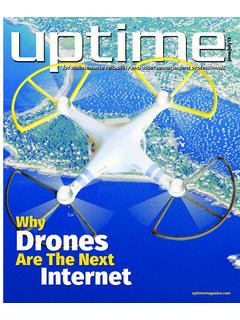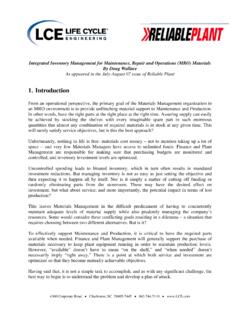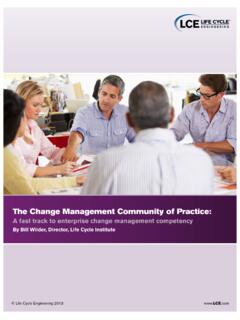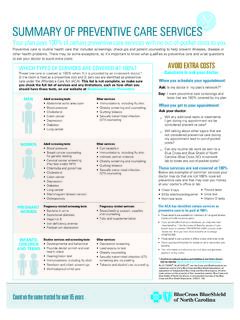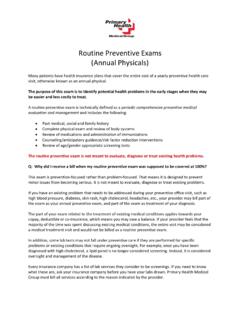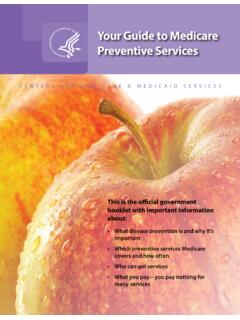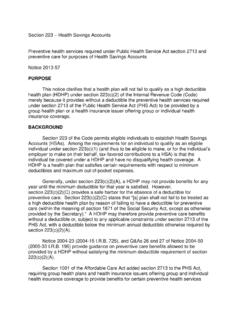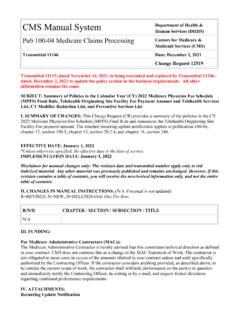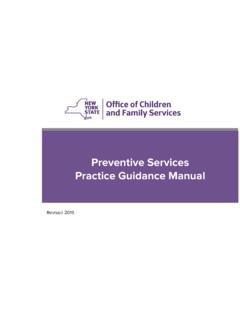Transcription of PS Manual-Preventive and Predictive Maintenance
1 preventive and Predictive Maintenance 700ZB00102 4-1 preventive and Predictive MaintenancePreventive and Predictive Maintenance 700ZB00102 4-2 preventive / Predictive Maintenance The guiding principle of PPM is the regular and systematic application of engineering knowledge and Maintenance attention to equipment and facilities to ensure their proper functionality and to reduce their rate of deterioration. In addition to dedicated engineering, PPM encompasses regular examination, inspection, lubrication, testing and adjustments of equipment without prior knowledge of equipment failure.
2 PPM also provides the framework for all planned Maintenance activity, including the generation of planned work orders to correct potential problems identified by inspection. The result is a proactive (rather than a reactive) environment, optimizing equipment performance and life. Properly developed PPM programs are engineered efforts, which optimize the relationship between equipment ownership and operating profits by balancing cost of Maintenance with cost of equipment failure, and associated production losses. Equipment ownership cost is a function of three factors: purchase price, equipment life and Maintenance cost. Total Maintenance cost is the sum of material and labor cost required to repair the item, the cost of preventive Maintenance to avoid repairs, plus the cost of lost production while the unit is out of service for repairs. PPM includes actions which extend the life of equipment and avoid unnecessary failures by substituting selective programmed effort for fix it when it fails Maintenance .
3 Actions that extend the life of equipment include: lubrication, cleaning, adjusting and the replacement of minor components like drive belts, gaskets, filters, etc. Actions that avoid unnecessary failure include timely, consistent equipment inspection and the aggressive use of nondestructive testing techniques such as vibration analysis, infrared testing, oil analysis and other techniques. Predictive Maintenance is the complement of preventive Maintenance . Through the utilization of various nondestructive testing and measuring techniques, Predictive Maintenance determines equipment status before a breakdown occurs. With Predictive devices currently available, it is incumbent upon Maintenance organizations to include the process of Predictive Maintenance in their Maintenance programs. A total PPM program is absolutely essential to an efficient, reliable and safe production process. Benefits are direct and substantial, including: high product quality, long machine life, avoidance of work stoppage, high safety, high morale and fewer frustrations.
4 There are five essential requirements: 1. Top management leadership and absolute commitment. 2. Compliance and discipline. PPM must be a normal part of schedule and capacity determination. 3. Process operators should be involved and perform daily Maintenance checks. 4. The true cost of poor Maintenance , which is several times initial estimates must be thoroughly understood by all. 5. Good PPM practices must be instituted immediately to enable the facility to achieve an efficient production system that delivers high quality goods on time, every time. Although treated as separate elements, preventive / Predictive Maintenance , Reliability Engineering, equipment history and functional pride and quality assurance are inextricably supportive each to the others. Success of the preventive / Predictive Maintenance program is dependent upon the existence of the other three elements. While planning and scheduling assure the effective utilization of resources to sustain an established proactive Maintenance program, it is these four elements working in concert that define the proactive program.
5 Logically, an effective Maintenance program, supported by these four essential elements, begins with equipment history. Then, based upon this factual information foundation, Reliability Engineering begins the development and subsequent refinement of a preventive / Predictive Maintenance program. An preventive and Predictive Maintenance 700ZB00102 4-3 effective scheduling function assures that PPM routines are punctually performed as they become due, as follows: A. The planning and scheduling program provides a structure into which PPM routines are woven. If PPM routines are continually shoved to one side, a proactive environment will never become reality. As scheduling contributes to the success of preventive Maintenance so preventive Maintenance contributes to the success of scheduling.
6 The greatest obstacle to effective scheduling is the spasmodic occurrence of emergency breakdown repairs. Through scheduled inspections of equipment and repairs during scheduled downtime, emergency breakdowns can be nearly eliminated; thus the cause of interruptions to the planned schedule is removed or reduced to a minimum. B. Program consistency and punctuality is a must. PPM must be viewed and conducted as an ongoing and controlled experiment to be continually nurtured and refined. It requires dedicated, uniquely talented effort (the Maintenance engineer). preventive and Predictive Maintenance 700ZB00102 4-4 Program results will carry to the bottom-line in the form of: 1. Reductions in the total cost of Maintenance 2.
7 Fewer urgent and emergency interruptions to operations due to equipment breakdowns 3. Level workloads and a stabilized work force 4. Reductions in the total labor needed to maintain facilities in the required condition 5. Controlled reductions in the inventory of materials and spare parts 6. Increases in the volume of work that can be planned and scheduled repetitively, and a decrease in high priority, randomly occurring and unscheduled work 7. Reduced unnecessary damage to equipment preventive / Predictive Maintenance Indicators of Ineffective PPM 1. Low equipment utilization due to unscheduled stoppages 2. High wait or idle time for machine operators during outages 3. High scrap and rejects indicative of quality problems 4. Higher than normal repair costs due to neglect of proper lubrication, inspections or service. 5. Decrease in the expected life of capital investments due to inadequate Maintenance Effective PPM Requires: 1.
8 Top management understanding of the true cost of poor Maintenance , which is several times initial estimate 2. Sustained management leadership and absolute commitment 3. Knowledge of equipment/process conditions required to yield quality, output, safety, and compliance standards A. One cannot determine what problems exist until knowing what conditions are proper 4. PPM and other programmed Maintenance must be a normal part of schedule and capacity determination. Management must insure that PPM is never delayed. A. PPM must be conducted as a Controlled Experiment 1. Plan 2. Do 3. Evaluate 4. Refine B. Weekly adherence to a balanced PPM schedule preventive and Predictive Maintenance 700ZB00102 4-5 5. Dedicated staffing is preferable 6.
9 Operator should participate in daily machine checks 7. Efficient PPM routes 8. Effective PM checklists defining program required limits of equipment condition 9. Adequate Equipment Records and Equipment Histories 10. Three phases A. Detection the key element B. Analysis defines the specific problem from which the symptom originates C. Correction the return of the PPM investment Maintenance Challenge(A Controlled Experiment)Do not attempt to immediately PM everythingApply A-B-C Analysis To Equipment CriticalityBuild upon early successes.*Total Maintenance Related Cost = Cost of PM+Cost of Repairs+Cost of ProductionLosses caused by Failures & PM TimeReactive MaintenanceExcessive Repairs & FailuresExcessive PMNo Failures & No Repairs* Excessive TinkeringLost ProductionCaused by FailuresLack of PM AccessCost of RepairsCost of PMProactiveMaintenanceTotal Maintenance CostACBM aintenanceBudgetOpratingBudgetMaintenanc e CostsHighLowLevel of MaintenanceLowHighManage Maintenance Do not allow it to control Operations!
10 PM does not achieve reliability, it preserves reliability!Total Maintenance Related Cost = Cost of PM+Cost of Repairs+Cost of ProductionLosses caused by Failures & PM TimeReactive MaintenanceExcessive Repairs & FailuresExcessive PMNo Failures & No Repairs* Excessive TinkeringLost ProductionCaused by FailuresLack of PM AccessCost of RepairsCost of PMProactiveMaintenanceTotal Maintenance CostACBM aintenanceBudgetOpratingBudgetMaintenanc e CostsHighLowLevel of MaintenanceLowHighManage Maintenance Do not allow it to control Operations!PM does not achieve reliability, it preserves reliability!Manage Maintenance Do not allow it to control Operations!PM does not achieve reliability, it preserves reliability!Manage Maintenance Do not allow it to control Operations!PM does not achieve reliability, it preserves reliability!The PM Program a Controlled Experiment preventive and Predictive Maintenance 700ZB00102 4-6 11.
